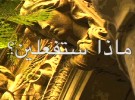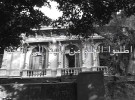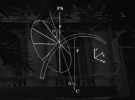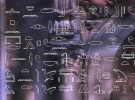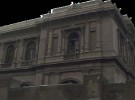Palace of Contemplation, 2005
Palace of Contemplation, 5 Sunsets and 5 Dawns, a 20 minute DVD video art work presented at the Cairo Opera House Art Gallery, Cairo, Egypt, uses the concept of the book to explore notions of learning, and uses the image of a book to create a “frame story†which “bookends†the piece. It is a poetic evocation of the Abandoned Halim Palace in Cairo, as well as a meditation on the whole life cycle of the building and its meaning in people’s lives, both throughout its current history, and into envisioned possible futures.
Video Stills:
Video Excerpt:
(Note: The first 49 seconds of the piece are completely silent. Best watched in High Quality – Click video once to play, then after video begins click the “HQ” icon on the lower right. Video will restart in High Quality.)
[tubepress]
Project Description:
In 2005, with the help of friends, I came across an abandoned palace which sits right in the heart of Cairo, in the Ismailia district, a poor neighborhood of auto chop shops and car mechanics.
It was built by Prince Saiid Halim Pasha, a grandson of Mohammed Ali (Wali of Egypt for the Ottoman Empire, and regarded as the “founder of modern Egypt”). Saiid Halim who became the Grand Vizier of the Ottoman Empire, built the grand red marble town house for his wife Amina Indji Toussoun, herself a great-granddaughter of Mohammed Ali. History has it that Prince Halim’s father could have been the ruler of all Egypt had it not been for his highly ambitious nephew.
On the first day of Ramadan I was able to arrange a tour of the place. I was taken both by the architecture and by its history, it having been a school first for elites, and in the end for wayward youth, before becoming totally abandoned. Some people had the idea of turning it into a contemporary art museum, but the neighborhood it resides in was beginning to show the signs of gentrification, and others wished to see it torn down or converted to luxury living space.
Several days later I came back with a video camera to document the building with an eye toward creating an artwork, but by this time the mood had already changed. Arriving at the front gates, I was met by guards who informed me that for safety’s sake, no one was allowed to enter. The artwork about this piece of architecture had already begun forming in my mind. Denied access, I decided simply to walk the perimeter and record a single circumambulation of the space.
The work uses the concept of the book to explore notions of learning, and uses the image of a book to create a “frame story” which “bookends” the piece. The video begins with the image of a grammar school book from the actual site, and tells the brief story of a boy from the school and the powerful Egyptian ruler who built the palace for his wife. Text about the boy comes not from the book pictured, but rather from an open source wiki book intended to teach Arabic to English speakers, and this same text appears later in the video in Arabic as well.
A little like the 1939 feature film “The Wizard of Oz” in which the “dream sequence” (in color) is the most vivid part, in “Palace…” sound and active movement only occur during the circumambulation stage, representing an imaginary five year journey into the future.
The Buraq was a kind of mythical winged horse and the traditional lightning steed of the prophets for dream journeys. Here in this neighborhood of garages and auto mechanics, the Buraq is replaced by the sound of a mini van starting up at the beginning of the journey, then driving away at the end.
Egypt is primarily Sunni, among whom fasting during Ramadan is considered one of the Five Pillars of Islam: fasting, charity, prayer five times a day, proclamation of faith, and making a pilgrimage to Mecca. “Palace…” involves a kind of pilgrimage around the space, and as Ramadan begins at dawn and ends with sunset, (thus completing the holy month until the following year,) the phrase “Five Sunsets and Five Dawns” actually indicates a passage of five years.
The number five appears in the work in a number of other ways as well, including a hand drawn chart showing the four seasons plus the month of Ramadan, the screen split into quadrants with a full screen layer above, and the overlay in the video of five kinds of language – namely Arabic, English, ancient Egyptian, the language of mathematics, and of symbols drawn by children.
As the journey circling the building begins, the viewer is asked to imagine what the Halim Palace might be, five Ramadans into the future. Montaged over the video documenting the exterior are the drawings charting Ramadan to 2010 as it clocks around the seasons, tracings of actual children’s drawings left behind at the site from the days of the school, mathematical symbols relating to light and learning, as well as parts of an ancient Egyptian tale in hieroglyphics, used to educate scribes. Elements of text in the video are in both English and Arabic, and include common Arabic proverbs relating to the palace, such as “Seek education from the cradle to the grave.”
The sound track is composed of audio from popular radio stations recorded in cabs in downtown Cairo, ambient street noise from the circling walk, and traditional Zar music, an ancient Egyptian ritual healing music, recorded live in a studio on the outskirts of the city.
The piece is a poetic evocation of my personal experience of the physical space, as well as a meditation on the whole life cycle of the building and its meaning in peoples lives, both throughout its current history, and into envisioned possible futures.







